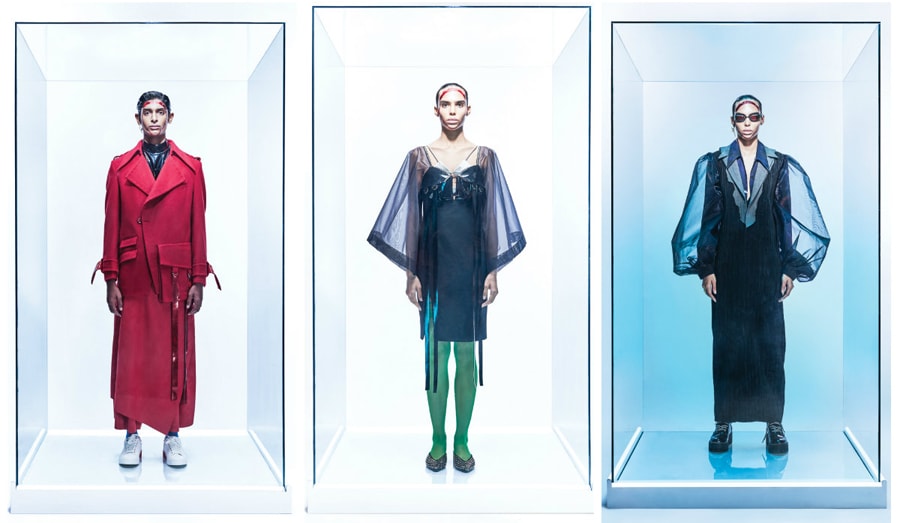
It is seldom that we come across fashion sensibilities going hand-in-hand with sustainability, intertwining perfectly to become a finished garment that seems as though design was its only focal point. The banality of the second largest industry globally, has been so far that conscious clothing is not perceived to be fashionable clothing – and that sustainability is secondary to design.
Team Apparel Resources talks to Akshat Bansal, Founder and Creative Director of Bloni, an environment-disruptive mind wading into creating not just fashion but better practices in the industry. Established in August 2017, Bloni speaks of modern ethical luxury and garments that transcend beyond the borders of creativity to purpose and expression.
Being only two years old, Bloni has had an admirable journey since its inception.
From showcasing in the coveted designer discovery programme GenNext at Lakmé Fashion Week, to exhibiting at FDCI Lotus Makeup India Fashion Week, Bloni is going places.
“Lakme was a great push in terms of media; exposure was really good and got us a lot of celebrity exposure in magazines and many people came to know about the brand.” – Akshat Bansal
Now, with the flagship store housed in the eclectic Dhanmill compound in Chhatarpur in New Delhi, the designer passionately speaks about his creative pursuits. To put it in his own words, “What we love doing is amalgamating Indian textiles and crafts and then contemporising them to today’s world besides bringing newness to them and amalgamating them with futuristic fabrics. This season, we used a lot of holographic and latex which was on a recycled jersey, so it was more like a technology X sustainable move which was something that was new to us and is something that I think is fashionforward.”
Bloni offers a comprehensive and an all-inclusive range of menswear, womenswear and agender clothing that encourages bold, unconventional yet contemporary approaches towards design and development of ideas. Its current collection’s ethos revolves around utility and practicality wherein, the clothes are more than just about the wearer looking good.
The brand sources its chanderi and organza from India, but the remaining 80 per cent of its fabrics are from Korea, Japan and Australia that offer a unique identity and a global experience to their customers.
Akshat explains the uniqueness of his work stating, “What I believe is in something which is modern and also has an ethical value to it and which is sustainable in terms of its fabric and its thinking; so we do a lot of garments made out of marine plastic waste, recycled nylon and yet try to make it look luxurious and feel comfortable at the same time. Plastic shouldn’t feel like plastic. Therefore, we make its quality as brilliant as a silk jersey, but also make sure that it feels comfortable because fashion must feel comfortable first and then look fashionable by the end of the day.”
Known for his signature tie & dye and pieces such as bralettes and jackets, the designer claims his designs are travel-friendly, long lasting and adhere to the philosophy of buying less and using more.
Akshat is very aware of the fact that India is changing and his contemporaries are putting India on a global map by travelling to Milan and Paris to have their work showcased.
Speaking about the vision for his brand, Akshat affirms, “The fashion industry has taken so much from the world that it is now needed that we give back. There is a functionality to clothes and also a purpose to wearing and buying something, which is very important. So that’s why we’re trying to push. And if we don’t save our ecosystem, I don’t know if artisans of today are going to be alive or not. So the whole idea is to save the planet earth first and then think about other aspects of it. And you know, giving income to a lot of artisans is a great thing to do.”
Akshat’s designs speak highly of sustainability, originality and fashionforward clothing. He adds, “And the whole idea is to dress it up and dress it down for different occasions because then you can actually use the same product again. Because of this social media game that we all live in, what happens is that the garment which should be worn more, is not used enough as once it gets clicked in a social media picture, you don’t know how to use it again. So, the idea of the brand is to come up with a solution so that you can reuse the product differently.”
Looking forward to the future, Akshat credits about having a great team. He even recommends studying the market thoroughly to strike the right balance between creativity and saleability. Additionally he strongly advocates following one’s instincts and avoiding to be generic. He admires and draws inspiration from the iconic brand Maison Margiela, accrediting them as trend forecasters and tastemakers for the world, but still believes fashion can be a catalyst to change the social fabric of society.







